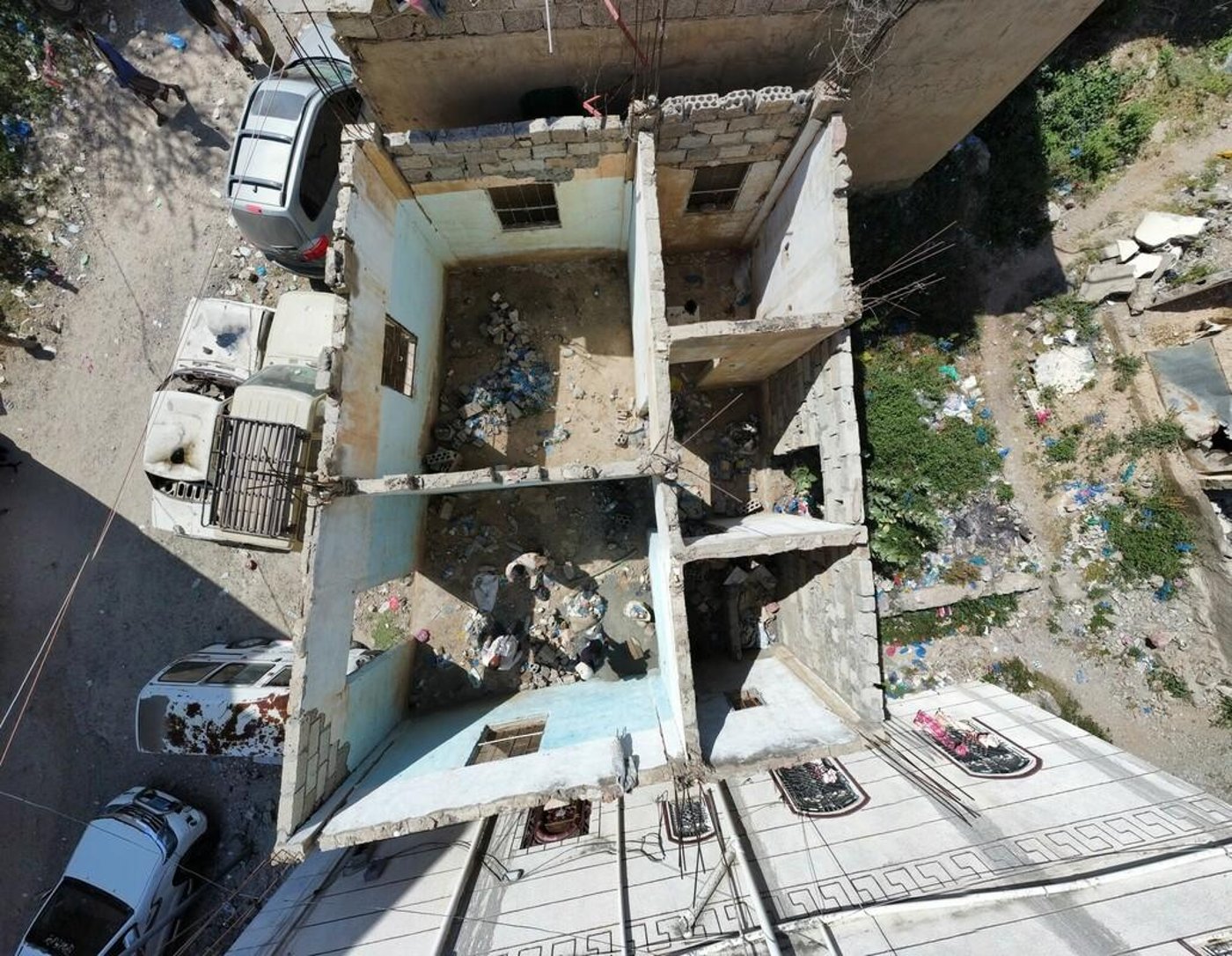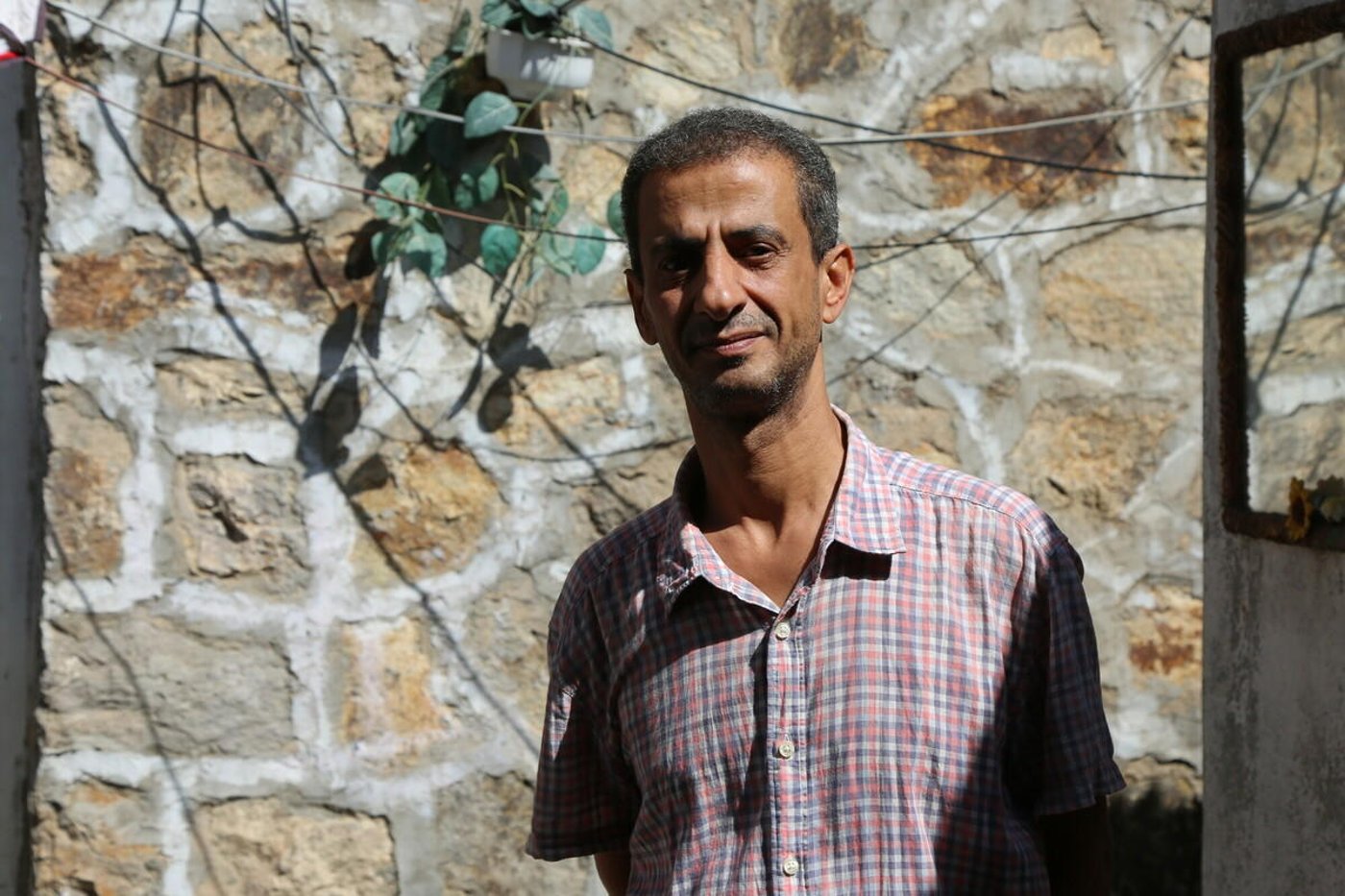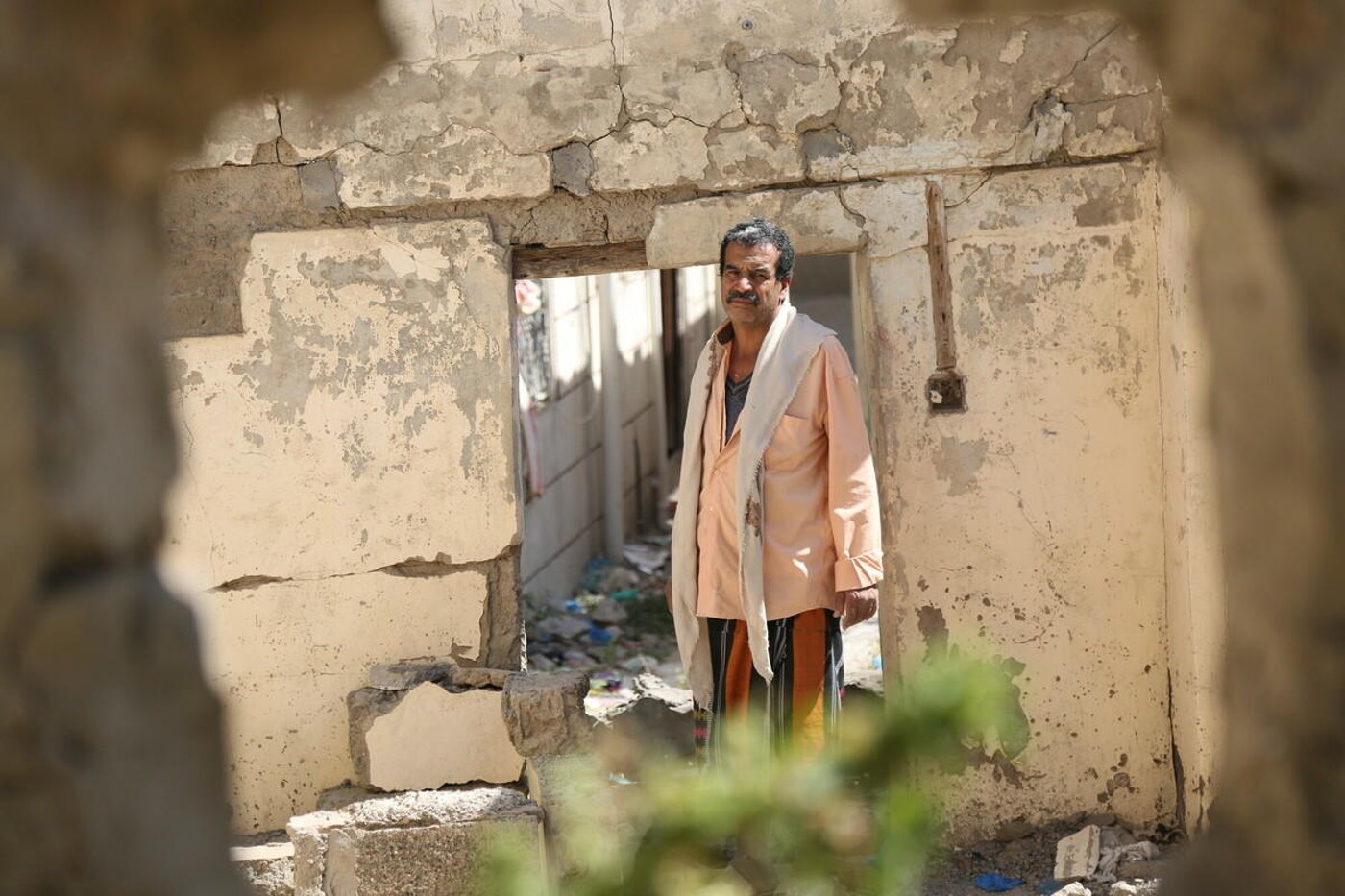It’s almost always the same story. The terrifying bombs, the whizzing of bullets, the sickening sound of tanks outside the home. Adults, parents and older relatives pick up whatever they can, grabbing the children and little else, as they flee towards what they hope is a safer place.
In Yemen, this is the story of millions of people, displaced by the conflict, who then find out that their houses have also been damaged, if not wiped out altogether.
The worst moment
Ali Al-Qadhi, a building labourer in his 50s, built a home for his family in Taiz city 15 years ago. But in 2015, he was forced to flee while the first shelling fell upon his neighbourhood. He rented a home in a safer area in Taiz city where he has been living for around eight years.
Later, he received the news that his home was damaged.
“A neighbour called me, telling me that my home was damaged. Hearing that was the worst moment of my life,” Ali recalls. “When I saw my home, I fainted. It isn’t easy to see your home, that you built stone by stone, so damaged. … My home is the most precious thing I have. I spent all my savings on building it.”

While some areas have become safe for residents to return to, many like Ali cannot afford the costs of rebuilding their damaged homes.
“I work on rebuilding the damaged homes of people who have money to pay for it. But I can’t rebuild my own as the costs of building materials are beyond my reach,” Ali laments. He hopes to return to his home and enjoy stability again, but that isn’t in his hands.
“I was happy to see our neighborhood was safe, but safety isn’t enough for people who can’t afford to rehabilitate their damaged homes,” he says.

One room left standing
Abdulraqeeb Al-Asbahi was living and working in another country but had eight of his family members living back home in Taiz City. The battles that moved to their neighbourhood forced his family to flee.
“I wasn’t sad when I heard from a friend that my home was damaged, I was just very happy that my family had fled by then and were unharmed,” he says.
Abdulraqeeb returned from abroad and spent two years with his family in displacement. He is now jobless and cannot afford the rent or rehabilitation of his home, so he decided to live in his damaged home where there is only one room left standing.

For people like Ali and Abdulraqeeb, life in a damaged home is better than displacement. However, they hope to see all damaged homes rehabilitated, and believe that this should be a priority for people returning to safe areas.
The Norwegian Refugee Council (NRC) is working in Yemen to rehabilitate damaged homes and provide humanitarian aid to millions of people affected by the conflict. Thanks to the Swedish International Development Cooperation Agency and Yemen Humanitarian Fund, we have been able to reach Ali and Abdulraqeeb and hundreds of others. But this year, funding cuts mean that the humanitarian response for Yemen will only reach a quarter of the USD 4.3 billion needed.
The world is effectively abandoning Ali and Abdulraqeeb, as they struggle to survive and rebuild their homes. We call on donors to increase their support for Yemen and prioritise the rehabilitation of damaged homes, so that the millions of people who are still displaced can return to their homes and rebuild their lives.


